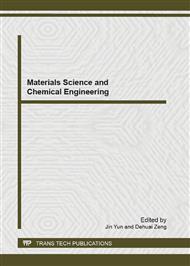p.616
p.620
p.624
p.630
p.637
p.641
p.645
p.650
p.656
Mechanical Properties of Homogenous and Heterogeneous Three Layered Particleboard Composite in Relation on Different Resin Content
Abstract:
Two types of three layered particleboard composite, homogeneous (Acacia mangium core-face/back) and heterogeneous (Acacia mangium core, mixed sawdust face/back) were fabricated with three different resin contents and densities. Three different resin content; 8:10:8, 10:10:10 and 12:10:12, were use with 500, 600 and 700kg/m3 board densities. Urea Formaldehyde (UF) was used as a binder and 1% of wax was added. The properties of bending strength (MOR & MOE) and internal bond strength (IB) were evaluated based on Japanese Industrial Standard; JIS A 5908:2003 Particleboard (2003). The results showed that there were relationship between resin contents and densities on homogeneous and heterogeneous particleboard composites. Result obtained indicated that bending and internal bond strength of homogeneous composite bonded using ratio of 12:10:12 resin content with 700kg/m3 density was better compared to ratio of 8:10:8 and 10:10:10 resin contents. When the densities were increased, the mechanical properties also increased.
Info:
Periodical:
Pages:
637-640
Citation:
Online since:
May 2013
Keywords:
Price:
Сopyright:
© 2013 Trans Tech Publications Ltd. All Rights Reserved
Share:
Citation:


